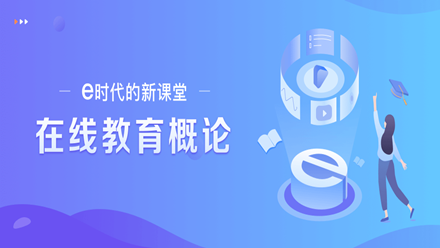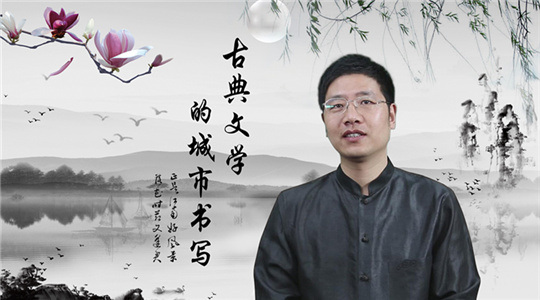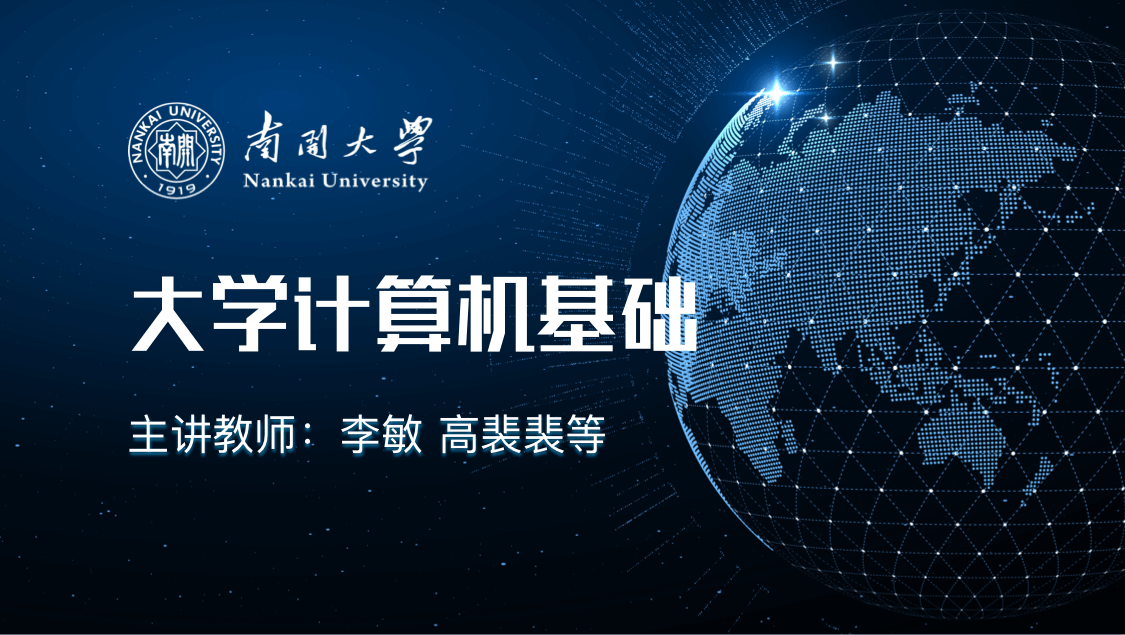
当前课程知识点:e时代的新课堂——在线教育概论 > 第二章 为什么做在线教育 > 2.2.4教育目标 > 2.2.4教育目标
我们老师在做教学的过程中
We teachers have our teaching objectives to achieve
都有教学目标
in the teaching process.
一门课有一门课的教学目标
There are teaching goals for each course,
一堂课有一堂课的教学目标
as well as for each lesson.
从学生的学习方式和他的能力的角度
From the perspectives of the way students learn and their learning abilities,
其实教学目标现在都分级分类的
teaching objectives are actually classified.
那实际上我们把教学目标分分类
In fact, if we classify teaching objectives,
就可以看到
we can see that
有些目标是比较适合
some objectives are quite suitable
用在线学习的方式来达到的
to be achieved through online learning
而有些教学目标
and some other teaching objectives
那就要通过老师助教的干预引导
need to be achieved with the intervention and guidance from teachers and teaching assistants,
通过学生的协作学习来实现
as well as students' collaborative learning.
所以我们来请吴老师
So we invite Mr. Wu
从这个教育目标的分类的角度
to talk about the classification of educational objectives
来给我们介绍一下
and introduce us to
一共有哪些类型的教育目标
What educational objectives there are
它们的各自的特点是什么
and what their characteristics are respectively.
吴老师
Mr. Wu.
那么我们选择一个就是布鲁姆的
Let’s discuss the contribution made by Bloom,
一个著名的心理学家
a well-known psychologist.
他提供了一个教育的目标分类法
He proposed a taxonomy of educational objectives.
有六类
There are six levels.
从下往上我们看到是
From the bottom to the top, we can see that
从最下面是记忆
memorization is at the bottom,
然后理解到运用到分析评价
and then there is comprehension, application, analysis and evaluation.
最高层次是一个创造
Creation is at the highest level.
从这个分析层面上
In this regard,
也有的学者把它分成从
some scholars classify them
下面三层和上面三层分成两个层面
into two levels.
最下面三个层我们叫初级认知
The bottom three levels come under primary cognition
上面三个就是分析评价和创造
and the top three -- analysis, evaluation and creation,
是一个高级认知
belong to advanced cognition.
但是高级认知现在是比较难做的
But advanced cognition is hard to achieve.
那现在的初级认知的阶段
At the level of primary cognition,
这个层面上大家记忆理解应用
memorization, comprehension and application,
还是相对在我们的教育过程中
are reflected relatively more
体现比较多的
in the educational process.
我们各位同学可以看到了
Students can find it out
就是我们一看老师写的
from the teaching objectives
讲稿的教学目标里
that teachers write in their lecture notes.
怎么写的
What it says
记忆什么
What should be memorized?
这关知识 要你记
Students need to memorize the knowledge points,
那部分叫你理解
comprehend something
还有一部分叫你应用
and apply something.
那就体现了布鲁姆
That reflects Bloom's taxonomy
我们讲的初级认知
and that is primary cognition.
但是现在我们讲的
But when we talk about
整个一个学习的能力层面
students' learning abilities,
不光我们讲的下面三个
we should not only include the bottom three levels,
而且要整个的教学目标的
but also all the teaching objectives,
特别是往更高的层面上
especially those at higher levels,
能够提供学生的这种综合的能力
which can develop students' all-around abilities,
特别是我们现在讲的一个创造的能力
especially creativity.
那就要在这个层面上
In this regard,
我们怎么能够培养这个方面的能力
how can we cultivate these abilities?
那所以在这个学习过程跟以往的学习
So the learning process differs from that of the past
可能原来我们是仅仅学知识
when students just learned knowledge.
那到能力的层面上我们要怎么来做
When it comes to ability, what should we do?
那这个就是在这个层面我们要
At this level, how can we
促进学生怎样的来深度学习
promote students' deep learning?
不光是把这个知识
It is not enough to just memorize
仅仅记忆了理解了还不够
and comprehend the content.
我们还要进行分析评价
Students need to develop the ability to analyze, evaluate
特别是要创造
and especially to create.
那就我们根据布鲁姆这个层面上
On the basis of Bloom's taxonomy of
这个分类目标
educational objectives,
特别是在我们慕课课程中
we specially combine them with
我们采用的这种方式结合起来
our method in the MOOCs.
我们老师讲一部分学生来学一部分
Part of the course will be given by teachers’ MOOC lecture and students learn it that way.
然后到课堂上
Then the other part will be taught in the classroom.
这样经过翻转课堂
This method of flipped classroom
能够促进我们的学生的这个深度学习
can promote students' deep learning,
对知识的深度的运用和创造
deep application and creation of knowledge.
如果没有在线课程的话大家知道
Without online courses,
我们课堂的教学学时有限
limited teaching hours
那么有限的学时
In the classroom
往往就用来去实现那个低层的目标了
are often used to achieve those low-level objectives.
带着大家学会理解记住
The teachers guide the students to learn, comprehend and memorize the material,
然后课时就用完了
and then the teaching hours run out.
那么如果说我们
So if we
做这样的混合式教学的话
carry out blended teaching,
我们就可以把
we can achieve
记忆和理解类型的这样的教学目标
the teaching objectives of memorization and comprehension
在在线学习中基本上去完成它
in online learning.
然后在课堂教学中
Then in classroom teaching,
老师再把重点难点串讲一下
teachers review key points and difficult points.
那接着我们就可以用比较多的
So we can make use of
这种我们排了课的这种大课的课时
more teaching hours in arranged classes
或者实验的课时
or experimental classes,
老师 助教和学生一起
Together with teachers, teaching assistants and the students
来共同做一些探究性的活动
to do some inquiry-based activities.
能够比较好的培养学生的这种创新能力
This method can better cultivate students' creativity.
所以说刚才吴老师介绍的
Just now, Mr. Wu introduced
这个教育目标的这种分级分类的
the concept of the classification of
这种概念
educational objectives.
我们把它有效地运用在
If we effectively apply it
混合式教学的课程设计中
to the course design of blended teaching,
会使我们的教学更加有效
we can make our teaching more effective.
对 这样子更加促进学生的
Yes. In this way, we can further promote
我们讲的深度学习
students' deep learning,
特别是促进学生的这样的
especially the cultivation of
高级思维能力的培养
students' advanced thinking abilities.
那这个就通过这种混合的方式
This blended teaching method is used
把学生的这种能力的提升
to improve students' abilities.
通过技术的手段
Using technology,
特别像慕课这样的一些平台
especially platforms such as the MOOCs,
是非常好的一种方式
is a very good method.
以往无法达到的
This could not be achieved in the past.
又存在一个学习的时空问题
And there used to be a time-space problem with learning.
课堂45分钟
A typical class lasts 45 minutes.
就这点时间没办法解决的
The problem couldn’t be solved with such limited time.
那么现在我们拓展到在线课堂上
Now we expand to the online classroom.
你看看现在的目标分解了
You can see that the objectives are broken down.
比如讲它是自己学习
For example, students learn by themselves
可以从记忆理解这个什么
and they can achieve the objectives of memorization and comprehension.
然后到课堂上能够深讲
Then the teacher have time to explain the contents in detail in the classroom.
-混合式教学该怎么做?与清华老师一起聊聊
-看清华老师如何进行大班混合式教学
--Video
-如何做好混合式课堂的互动
--Video
-与清华大学老师聊聊慕课独特的教学设计
-“挑战60s”授课短视频大赛
--Video
-与清华大学老师聊聊慕课的制作与运营
--Video
-1.1在线教育发展现状
--html
-1.1.1在线教育带来了e时代的新课堂
-1.1.2师生说
--1.1.2师生说
-1.1.3我国在线教育的特点
-1.2什么是在线教育
--html
-1.2.1概念解析
-1.2.2教育的技术发展史
-1.2.3在线教育的五要素模型
-1.3在线教育对教师的机遇与挑战
--html
-1.3.1机遇篇
--1.3.1机遇篇
-1.3.2挑战篇
--1.3.2挑战篇
-1.4在线教育发展的历史
--html
-1.4.1二十世纪的发展
-1.4.2二十一世纪的发展
-1.4.3在线课程三要素
-1.4.4虚拟教育组织
-1.5课程内部体系和外部关系
-第一章 解读在线教育--单元习题
-讨论题
-2.1数字时代带来教育变革
-2.2在线教育更适应学生的学习需求
--html
-2.2.1教育需求的发展
-2.2.2学习风格与学习类型
-2.2.3多模态数据分析学生学习行为与需求
-2.2.4教育目标
-2.2.5拓展学习时空,促进深度学习
-2.2.6自主学习系统的案例分享
-2.3在线教育帮助教师成长
-2.4学校和国家为什么要做在线教育
-单元习题--作业
-3.1高等学校在线教育发展
-3.1.1学校现状
-3.1.2平台与联盟
-3.2不同类型的教师都能得益于混合式教学
-3.3混合式教学的好处
-3.3.1当前的教学问题
-3.3.2教师和学生的收益
-3.4混合式教学的关键细节与常见误解
-3.4.1关键细节一
-3.4.2关键细节二
-3.4.3关键细节三
-3.4.4误解篇一
-3.4.5误解篇二
-3.5智慧教学工具的发展
-3.5.1综述篇
--3.5.1综述篇
-3.5.2雨课堂的诞生
-3.5.3雨课堂的功能
-3.5.4课堂教学需要雨课堂
-3.5.5雨课堂解决面授时间紧张的问题
-3.5.6雨课堂解决课前课中课后的学习效果问题
-3.5.7课前课中课后雨课件设计要点
-第三章 高校在线教育进行时--单元习题
-讨论题
-讨论题
-4.1教育实践的展望(一) 教育创新
-4.2教育实践的创新(二) 教育技术与决策
-4.3教育理论的热点趋势
-第四章 在线教育的未来--单元习题
-讨论题
-5.1邓俊辉老师《数据结构》与《计算几何》教学案例
--html
-5.1.1慕课制作与使用心得(一)
-5.1.2慕课制作与使用心得(二)
-5.2张瑜老师《思想道德修养与法律基础》教学案例
--html
-5.2.1教学理念与混合式教学的主要环节
--Video
-5.2.2章节实例
-5.3杨芳老师《大学英语》教学案例
--html
-5.3.1混合式教学设计心得
-5.3.2 University单元教学设计
-5.4于歆杰老师《电路原理》教学案例
--html
-5.4.1小容量班级完全翻转课堂
-5.4.2大容量班级部分翻转课堂
-5.5郑莉老师《C++语言》教学案例 雨课件样例及校内教学心得分享
--Video
-单元习题--作业






